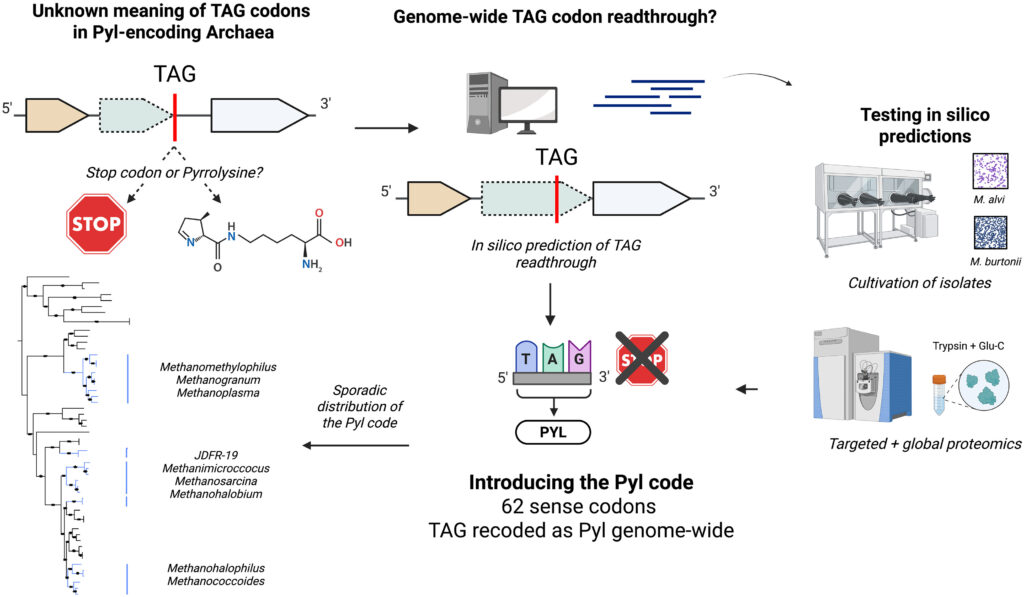
Many genetic code expansion (GCE) techniques rely on the native ability that some organisms have to recode the stop codon TAG to incorporate pyrrolysine, a special amino acid not encoded in other organisms. Previously, in known organisms with this ability, pyrrolysine was only incorporated at TAG codons in special cases while all other instances of TAG remained stop codons, which ultimately affected their efficiency as a tool for GCE. In this paper, researchers in the Banfield lab discovered organisms that perform this TAG recoding at a much higher efficiency than previously known, identifying some archaea that always use TAG to encode pyrrolysine and never as a stop codon. With the help of C-GEM researchers, this paper also establishes that the translation machinery from several of these archaea can be transplanted into E. coli and leveraged for incorporation of non-canonical monomers.
This work involved contributions from the Banfield lab and Schepartz lab.
Read the Innovative Genomics Institute’s article on the paper here.